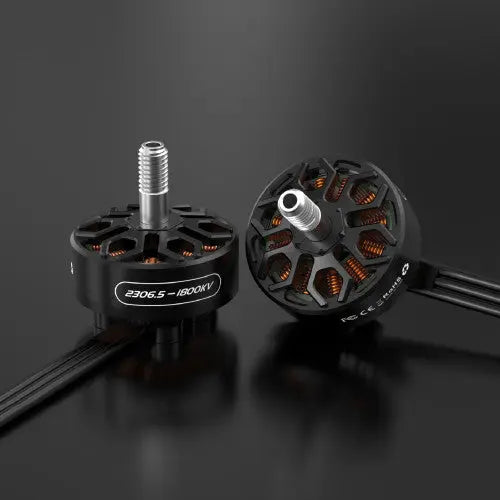Motor Type (2306.5):
The “2306.5” indicates the stator size of the motor. In this case, it’s a 23mm diameter and 6.5mm height stator. Larger stator sizes generally provide more power and torque.
KV Rating (1800KV):
The KV rating specifies the motor’s speed in revolutions per minute (RPM) per volt. A lower KV rating (like 1800KV) is suitable for larger propellers and provides more torque, making it suitable for 5-inch propellers commonly used in FPV racing and freestyle drones.
Voltage (5S or 6S):
The KV rating, in combination with the number of LiPo cells (S), determines the motor’s optimal voltage. For example, a motor labelled “1800KV” might be suitable for a 4S (4-cell) or 6S (6-cell) LiPo battery.
Construction and Build:
Look for information on the build quality, materials used, and overall construction of the motor. Motors designed for FPV racing often have a robust build to withstand crashes.
Weight:
The weight of the motor is a critical factor, especially in racing drones where minimizing weight is crucial for agility and speed.
Shaft Size:
The size of the motor shaft is essential, as it determines the compatibility with different propellers. Most FPV motors have a 5mm shaft, but it’s always good to double-check.
Cooling Design:
Some motors come with features such as cooling fins or vents to dissipate heat during prolonged use, which can improve overall performance.
Mounting Pattern:
Check the motor’s mounting pattern to ensure it is compatible with your drone’s frame.
Integrated 5V BEC (Battery Eliminator Circuit):
Some motors come with an integrated 5V BEC that can be used to power accessories like cameras or video transmitters.











